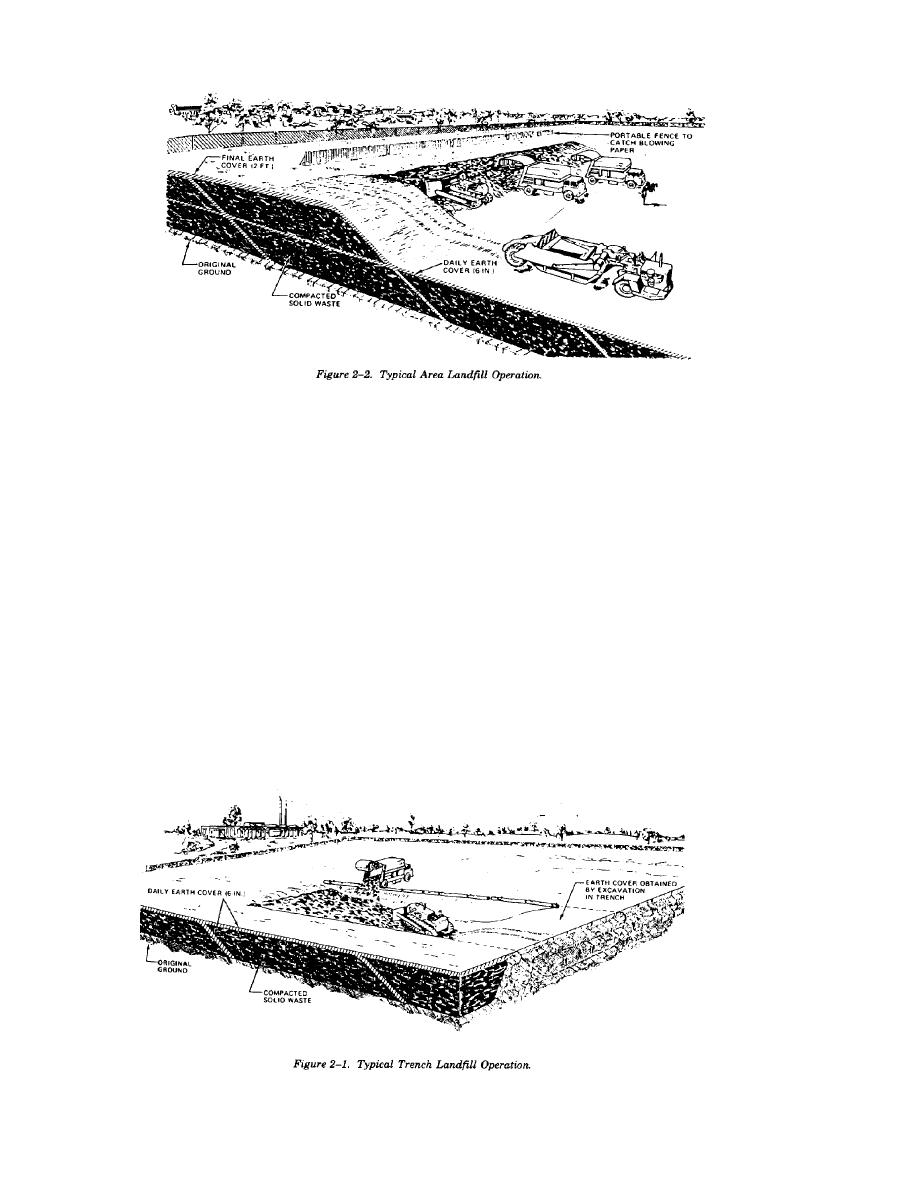
TM 5-814-5
b. Other Considerations. The selection process
5 miles of any runway end, the Installation
must consider ground and surface water condi-
Commander or his/her representative must notify
tions, seismic impact zones and fault areas, geol-
the affected airport authority and the Federal
ogy, soils and topographic features, solid waste
Aviation Administration (FAA).
(2) Wetlands. All infringements into wetlands
types and quantities, geographic factors, and aes-
will be avoided. Restrictions and considerations for
thetic and environmental impacts. Environmentally
impacting wetlands are in 40 CFR 258, 33 CFR
sensitive areas, including wetlands, 100-years
320, and EO 11990.
flood-plains, permafrost areas, critical habitats of
(3) Seismic Impact Zones. Areas of high earth-
endangered species, and recharge zones of sole
quake activity will be avoided. No portion of a
source aquifers, should be avoided or receive low-
landfill shall be in a seismic impact zone, as defined
est priority as potential locations for landfill dis-
in 40 CFR 258, unless it is designed to resist the
posal facilities. These areas might require a com-
corresponding pressure.
prehensive study of the location with respect to
(4) Unstable Areas. Karst terrain will be
environmentally sensitive conditions.
avoided. Before a landfill can be located in a
(1) Airports. No portion of a landfill can be
geologically unstable area it must be demonstrated
within 10,000 feet of a runway end used by turbojet
to the appropriate state agency that the integrity of
aircraft or 5,000 feet of runway end used by piston-
the liner system and other structural components
type aircraft. If a site under consideration is within
will not be disrupted.
2-2



 Previous Page
Previous Page
